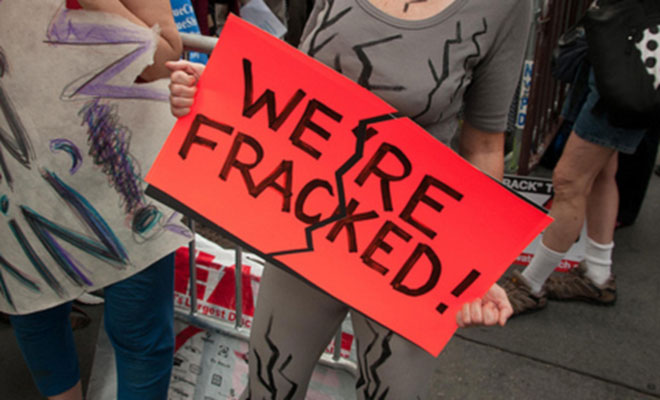
Fracking Health and Safety
Posted on July 23, 2014
Shale Gas extraction or “fracking” has had its fair share of controversy. Movies such as ‘Gasland’ have portrayed tales of communities in Pennsylvania where residents could light their water, due to a high methane content generated by incorrect fracking procedures. And in that sentence lies the crux of the problem – for if shale extraction is done incorrectly, it comes with many risks. However, with correct health and safety measures, and extensive risk assessment in place, shale gas can be extracted safely.
The Geological Society of London and the Petroleum Exploration Society of Great Britain recently submitted a report for the identification, assessment and management of risks and uncertainties associated with shale gas extraction. The report was confident that, given sufficient care and attention, it is possible to locate and extract shale gas safely.
Several key concerns were addressed. With regard to water sourcing and subsequent disposal during hydraulic fracturing it was concluded that the procedure is safe, if the fracking fluid compositions are correct.
A baseline survey before drilling operations can identify the effect of operations on groundwater. Groundwater contamination (which could also affect domestic water supplies) can be avoided by restricting the fracturing at depths of many hundreds of meters below the groundwater aquifer. Methane migration can be avoided by paying attention to well design both in terms of the cement bond between the casing and the well bore, and composition of the casing and its ability to resist corrosion. If all these aspects are appropriately assessed, understood and regulated, it is possible to construct and operate wells without endangering human health or the local environment.
The submission has ruled out the release of radioactive material though fracking. And any risks of earthquakes can be reduced to negligible levels by avoiding injection into or near to faulted zones. Micro-seismic monitoring networks can be used to monitor the level of seismic activity during and after the fracking process.
Appropriate R&D can reduce real or perceived risks and uncertainties about impacts, and also improve the efficiency of shale gas identification, characterisation and extraction.
The report further clarifies that the UK hydrocarbons industry has demonstrated that it can successfully exploit resources while meeting the highest environmental and social standards. There is no reason why it should be different this time.
There is every reason for companies involved to follow the above recommendations and work to reduce both commercial and environmental risk. After all, shale gas extraction could effectively revolutionise the economics of the UK and it is in everyone’s interest to ensure that this opportunity is not jeopardised.
Questions responded to:
- Comments were invited on the main perceived risks of extraction (methane in groundwater, induced seismicity, water use and contamination from fracking fluids, but not impact of use of the gas, i.e. carbon emissions).
- Is the UK skills base appropriate? What needs improving?
- What are the R&D priorities, and how should Research Councils be involved? (Gaps in the knowledge base, addressing areas of risk and uncertainty.) Should they bring people together to brainstorm the science/engineering issues? Who?
- What further work needs to be done to provide the scientific basis on which government can decide whether it should proceed? (For example, should BGS look further at resource assessment, baseline surveys, etc.)
- What are the uncertainties in risk assessment and management?
- Does the regulator have the requisite scientific competence and capacity?
- To what extent is non-industry funded research needed if there is to be scientific and public confidence in the process?
- Are there lessons from elsewhere (e.g. radwaste) on the relationship between geoscience and public engagement?
